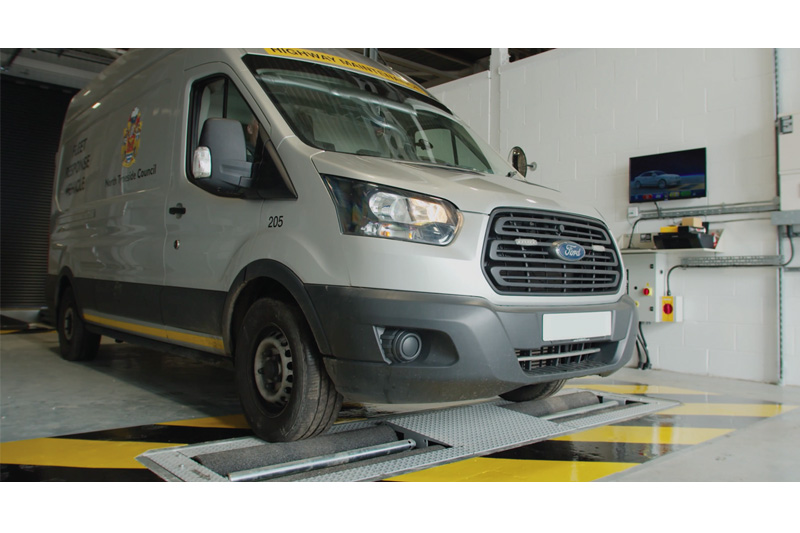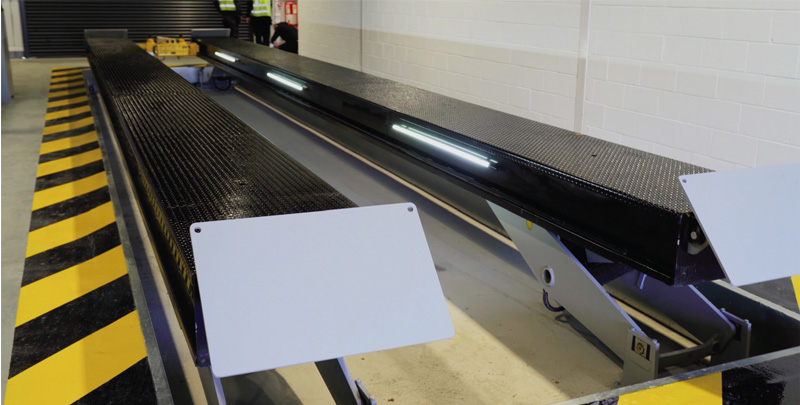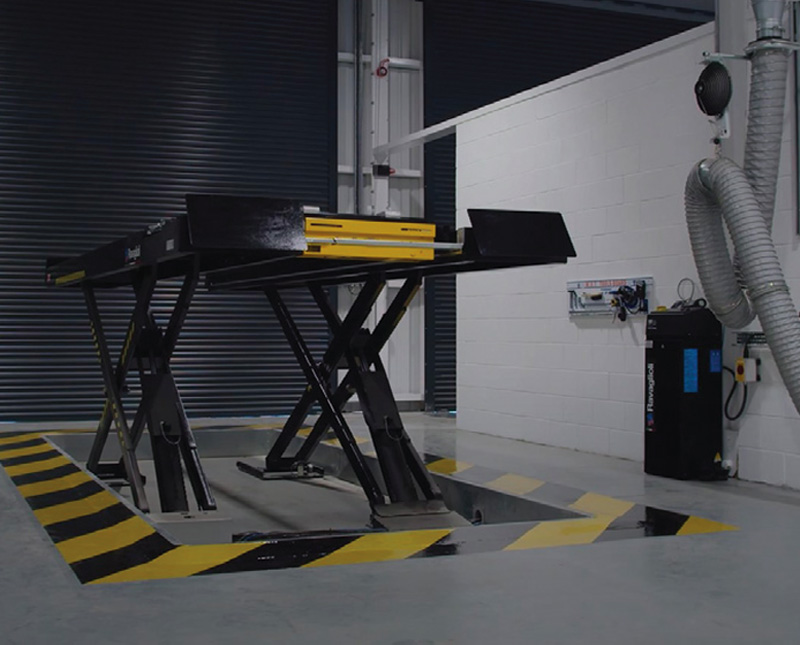
To perform MOT tests efficiently, it’s important to have the right equipment in your MOT bay. JHM Butt delves into the various classes of MOT bays and the latest advancements that make MOT testing more accurate than ever before.
Regardless of the class, MOT bays require specific equipment to conduct inspections. Here are some essential tools and their uses:
- Roller Brake Tester (RBT): Measures the efficiency of a vehicle’s braking system, ensuring it meets safety standards.
- Headlamp Beam Tester: Checks the alignment and intensity of a vehicle’s headlights to ensure proper visibility on the road.
- Wheel Play Detector: Checks for excessive play in a vehicle’s steering components, ensuring proper control and safety.
- Exhaust Gas Analyser: Analyses emissions to verify the vehicle’s compliance with environmental regulations.

When mechanics are buying or updating MOT equipment, there are several important considerations to keep in mind. Here are some factors they should be aware of and consider:
Quality and Durability: The quality and durability of the equipment should be a top priority. Investing in high-quality equipment ensures accurate and reliable test results and longevity of use. Look for reputable manufacturers and suppliers with a track record of producing reliable and robust equipment.
Technical Specifications: Mechanics should consider the specific technical specifications of the equipment they are purchasing or updating. It’s important to ensure that the equipment meets the requirements for conducting MOT tests on the vehicles they service. Consider factors such as compatibility with vehicle models, measurement range, and precision of the equipment.
Compliance with Standards: Verify that the equipment meets all necessary standards and regulations for MOT testing. It should comply with relevant laws and requirements to ensure the accuracy and legality of the tests conducted. Checking for certifications and adherence to industry standards is crucial.
Ease of Use: The equipment should be user-friendly and intuitive to operate. Complex and difficult-to-use equipment can lead to errors and inefficiencies during testing. Look for equipment with clear instructions, user-friendly interfaces, and features that simplify the testing process.
Maintenance and Support: Consider the availability of maintenance and support services for the equipment. Regular maintenance is crucial to ensure optimal performance and longevity. Ensure that spare parts are readily available, and consider the reputation and accessibility of the manufacturer or supplier for technical support and longevity of service in the industry.
New MOT technologies
Automated Test Lanes (ATL): ATLs have revolutionised MOT testing by automating various aspects of the process. These lanes utilise integrated testing equipment and software systems that streamline the testing process and reduce human error. Automated systems perform tests such as brake testing, emissions analysis, headlamp beam testing, and more, providing accurate results and minimising subjectivity.
Integrated Diagnostic Systems: New MOT equipment often comes with integrated diagnostic capabilities, allowing mechanics to conduct in-depth analysis and obtain detailed diagnostic information. This helps identify specific issues quickly and accurately, facilitating more effective repairs and adjustments.
Wireless Connectivity: Some modern MOT equipment offers wireless connectivity features, allowing seamless data transfer and integration with computer systems. This streamlines the testing process, increases efficiency, and reduces the risk of data entry errors.

When it comes to the durability and quality of MOT equipment, mechanics should pay attention to several aspects:
Build Quality: Look for equipment made using high-quality materials that can withstand regular use, including heavy-duty components wherever applicable. High-quality construction ensures durability and reliability.
Calibration and Accuracy: Verify that the equipment is accurately calibrated and recalibrated periodically. Accurate readings are vital for valid test results, and regular calibration ensures continued accuracy.
Manufacturer’s Reputation: Research the reputation of the manufacturer or supplier. Consider their history, customer reviews, and feedback on the quality, durability, and reliability of the equipment. Reputable manufacturers with a solid track record are likely to provide better-quality products.
Warranty and Service: Check for warranty options and the availability of service and support. A good warranty ensures protection against defects, and reliable service and support are crucial when assistance is needed.
Prioritising durability, quality, and accuracy will lead to a more efficient and reliable MOT testing process, benefiting both the mechanics and their customers.
In conclusion, consider the class-specific equipment required, and ensure quality, technical specifications, and durability when updating or purchasing new equipment. With advancements in technology, MOT testing has become more accurate than ever before.









